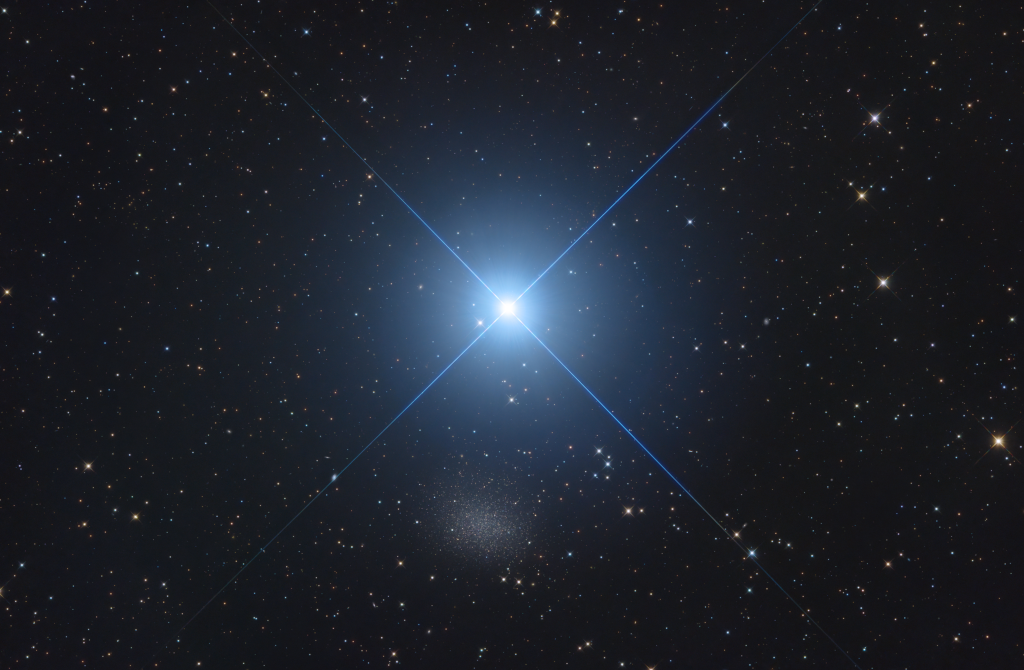2024年4月26日
Regulus and the Dwarf Galaxy
Image Credit & Copyright: Markus Horn
Explanation: In northern hemisphere spring, bright star Regulus is easy to spot above the eastern horizon. The alpha star of the constellation Leo, Regulus is the spiky star centered in this telescopic field of view. A mere 79 light-years distant, Regulus is a hot, rapidly spinning star that is known to be part of a multiple star system. Not quite lost in the glare, the fuzzy patch just below Regulus is diffuse starlight from small galaxy Leo I. Leo I is a dwarf spheroidal galaxy, a member of the Local Group of galaxies dominated by our Milky Way Galaxy and the Andromeda Galaxy (M31). About 800 thousand light-years away, Leo I is thought to be the most distant of the known small satellite galaxies orbiting the Milky Way. But dwarf galaxy Leo I has shown evidence of a supermassive black hole at its center, comparable in mass to the black hole at the center of the Milky Way.
Tomorrow’s picture: all around eclipse
轩辕十四与矮星系
影像提供与版权: Markus Horn
说明: 北半球春天的夜晚,很容易在东方地平线上方看到狮子座最明亮的恒星轩辕十四。于这片望远镜视野里,轩辕十四是影像中心的带芒亮星。而轩辕十四离我们仅有79光年远,是一颗快速自转的炽热恒星,也是多星系统的成员之一。位于轩辕十四下方、几乎淹没在炫光里的弥漫光斑,则是小星系狮子座I(Leo I)所发出的星光。狮子座I是一个矮椭球状星系,是以银河系和仙女星系(M31)为主要成员的本星系群的小成员之一。狮子座I距离我们约80万光年远,咸认为是绕行银河系的已知小伴星系之中的最远者。不过,矮星系狮子座I展现出其核心有超大质量黑洞的迹证,而且其质量与银河系中心的黑洞相当。
明日的图片: all around eclipse








One Comment